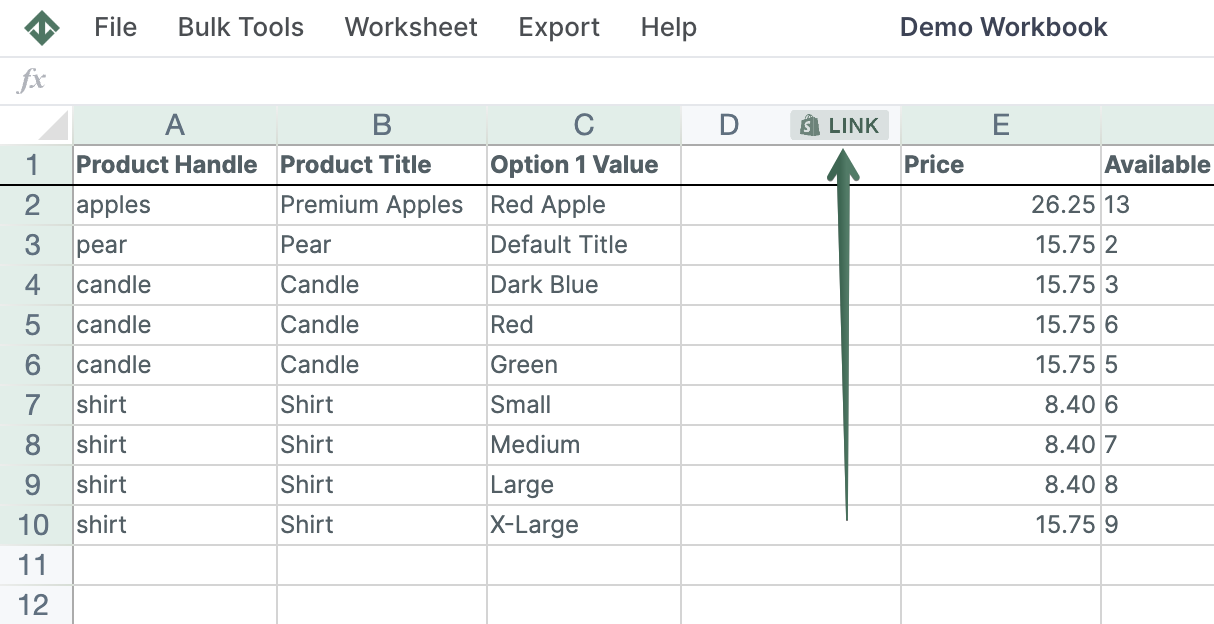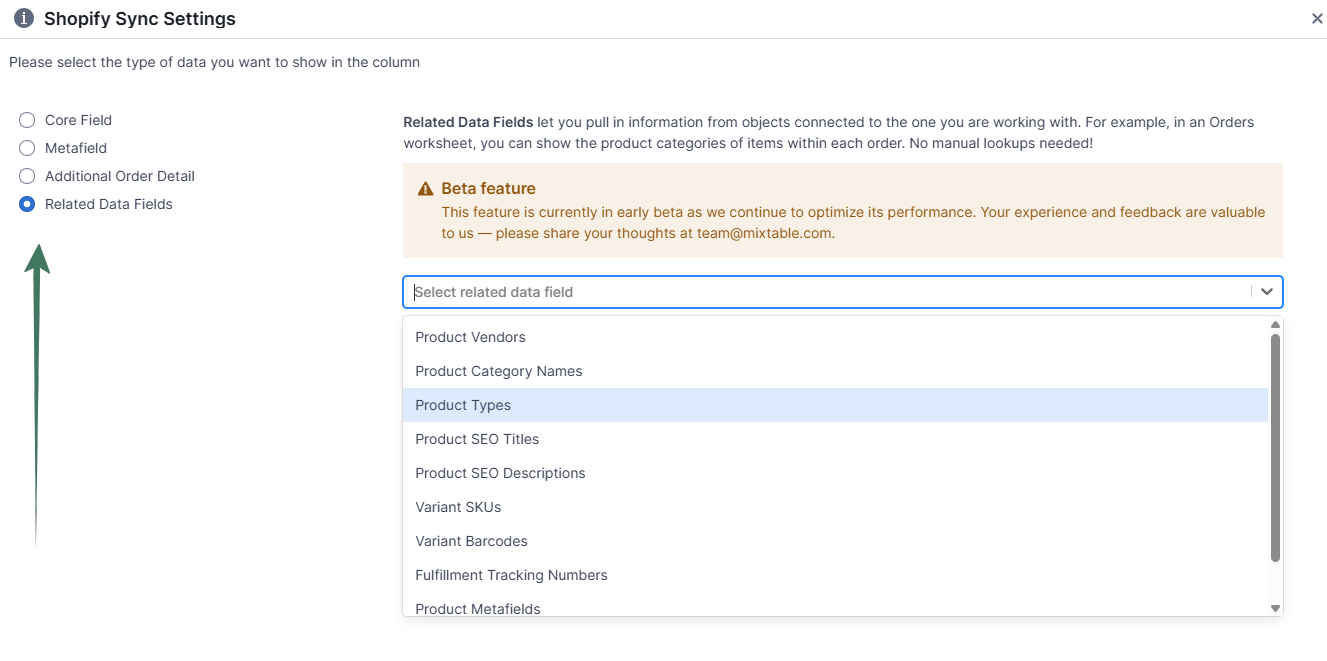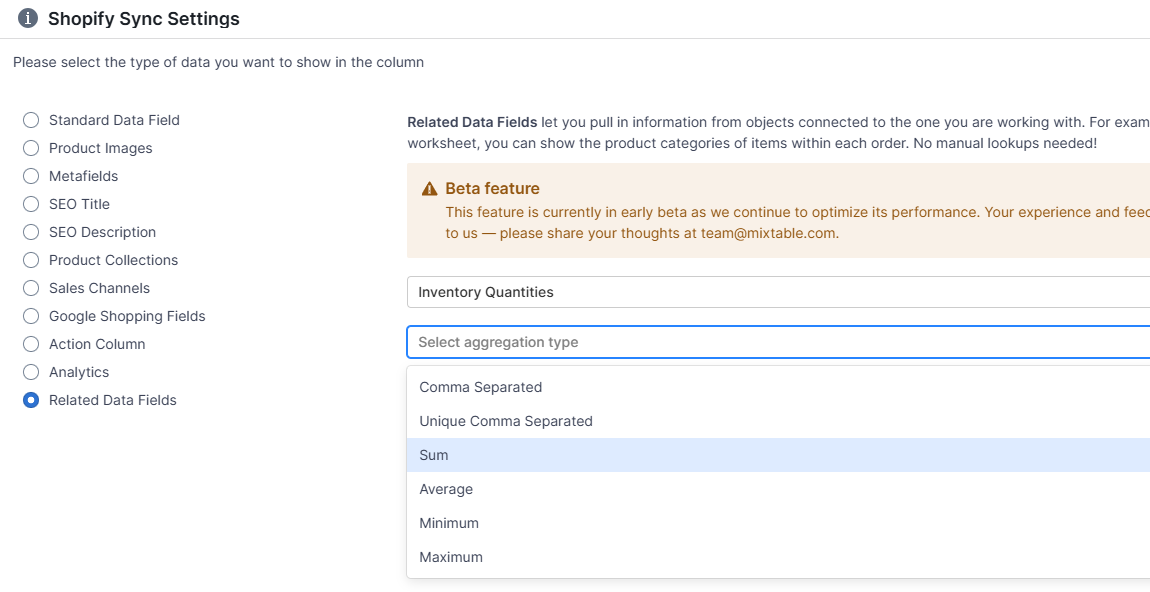Say goodbye to complex VLOOKUPs or manual cross-referencing. Mixtable’s Related Data Fields let you pull in key information from connected Shopify objects — like seeing product metafields directly in an orders worksheet — without writing a single formula.
Connecting order details with product types, vendors, and other key Shopify information used to mean VLOOKUP nightmares. Not anymore! Mixtable now puts this data directly within your reach. Instantly access rich, related Shopify data—directly in your Orders sheet:
To use Related Data Fields for Orders, you’ll need a Mixtable workbook that contains a worksheet with your Shopify Order data. If you haven’t created one yet, start by installing the Mixtable Spreadsheet Editor app from the Shopify App Store. Once that’s done, you can quickly create a workbook and start pulling in related data with just a few clicks.
Note: You can either add an Orders worksheet to an existing workbook, or create a new one using our Orders and Order Items template to get started quickly.
To load new Shopify data, start by selecting an empty column — any column with a non-green header (green headers mean the column is already linked to Shopify data). Then, click the ⚡️ button in the column header to open the selection window to choose the data you want to pull in.

From the Shopify Sync Settings window, choose Related Data Fields.

Then, from the drop-down list, you have a choice of different related data fields to select from:
Finally, choose how you’d like the data to appear. Display options vary based on the type of field you’ve selected. For text fields, you can show multiple values as a comma-separated list. For numeric fields, you can apply functions like sum, average, minimum, or maximum to get useful summaries at a glance.
With Related Data Fields, you can pull related inventory information (quantity available and total inventory value) directly into your Products worksheet. No more VLOOKUPs or linking across sheets.
To use Related Data Fields for Products, make sure you have a Mixtable workbook with a worksheet that contains your Shopify Product data. If you haven’t set one up yet, install the Mixtable Spreadsheet Editor app from the Shopify App Store. Once installed, you can easily create a workbook and start linking related product data into your spreadsheet.
Note: The worksheet needs to show product information. You can create one using our Basic Product Info template, or add a Products (no variants) worksheet to an existing workbook.
To load new Shopify data, start by selecting an empty column — any column with a non-green header (green headers mean the column is already linked to Shopify data). Then, click the ⚡️ button in the column header to open the selection window to choose the data you want to pull in.

From the Shopify Sync Settings window, choose Related Data Fields.

Then, from the drop-down list you can choose one of the following related data fields:
Inventory Quantities per Product – Shows the inventory levels across all variants of a product. You can choose how to display the data: as a comma-separated list (e.g., 6, 11), a total sum, an average, or the minimum or maximum inventory quantity.

Inventory Value per Product – Calculates the total inventory value for a product by multiplying the inventory quantity of each variant by its cost (if greater than 0). You can show the total for the product by selecting the sum aggregation. You can also choose to display the average, minimum, or maximum values across variants.
You are ready!
Well done! Now that you have related order or product data in an online spreadsheet, you can use any Excel function to analyze the data, such as:
Find out more about the Mixtable suite of products here.